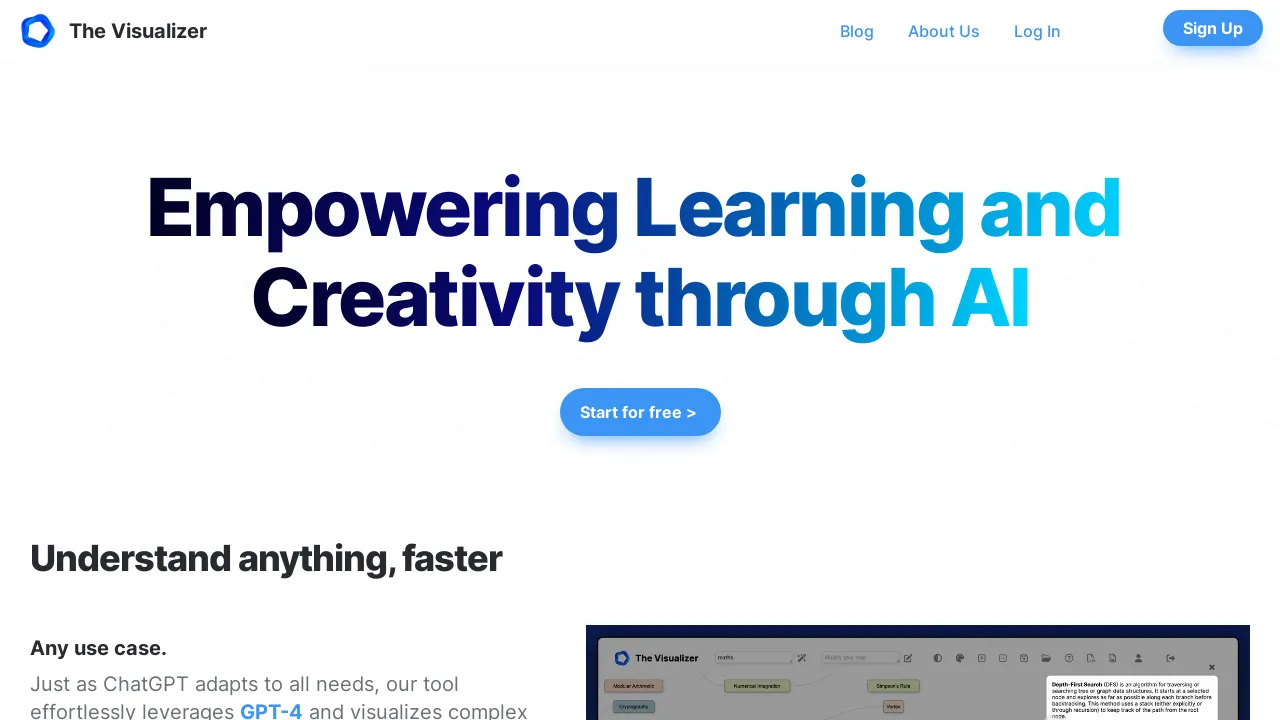Easily learn complex topics with AI—in minutes, not days.

Easily learn complex topics with AI—in minutes, not days. Overview
The Visualizer is an AI-powered tool that leverages GPT-4 to transform complex information into easily digestible visual maps. It is designed to enhance comprehension and retention of complex topics, making it ideal for students, lifelong learners, researchers, project managers, and creative thinkers. The tool is trusted by authors, educators, and learners from various institutions and offers a unique way to visualize intricate scientific concepts, project structures, and creative ideas.
Easily learn complex topics with AI—in minutes, not days. Highlights
- The Visualizer uses GPT-4 to adapt to any use case, offering flexibility in learning, work, and communication.
- It transforms complex information into visual maps, enhancing comprehension and retention of complex topics.
- The tool is ideal for various fields including scientific research, project management, and creative thinking.
Use Cases
A student studying for a complex biology exam uses the Visualizer to better understand and remember intricate biological processes. They input the text from their textbook into the tool, which then creates a visual map of the information.
The student is able to understand and remember the complex biological processes more easily, leading to better exam performance.
A project manager at a tech company uses the Visualizer to map out the structure of a new software development project. They input the project details into the tool, which then creates a visual map of the project structure.
The project manager and their team have a clear, visual understanding of the project structure, leading to more efficient project execution and better end results.
A scientific researcher uses the Visualizer to understand and communicate complex research findings. They input their research data and findings into the tool, which then creates a visual map of the information.
The researcher is able to understand their findings more easily and communicate them more effectively to others, leading to better research outcomes and increased understanding among their peers.